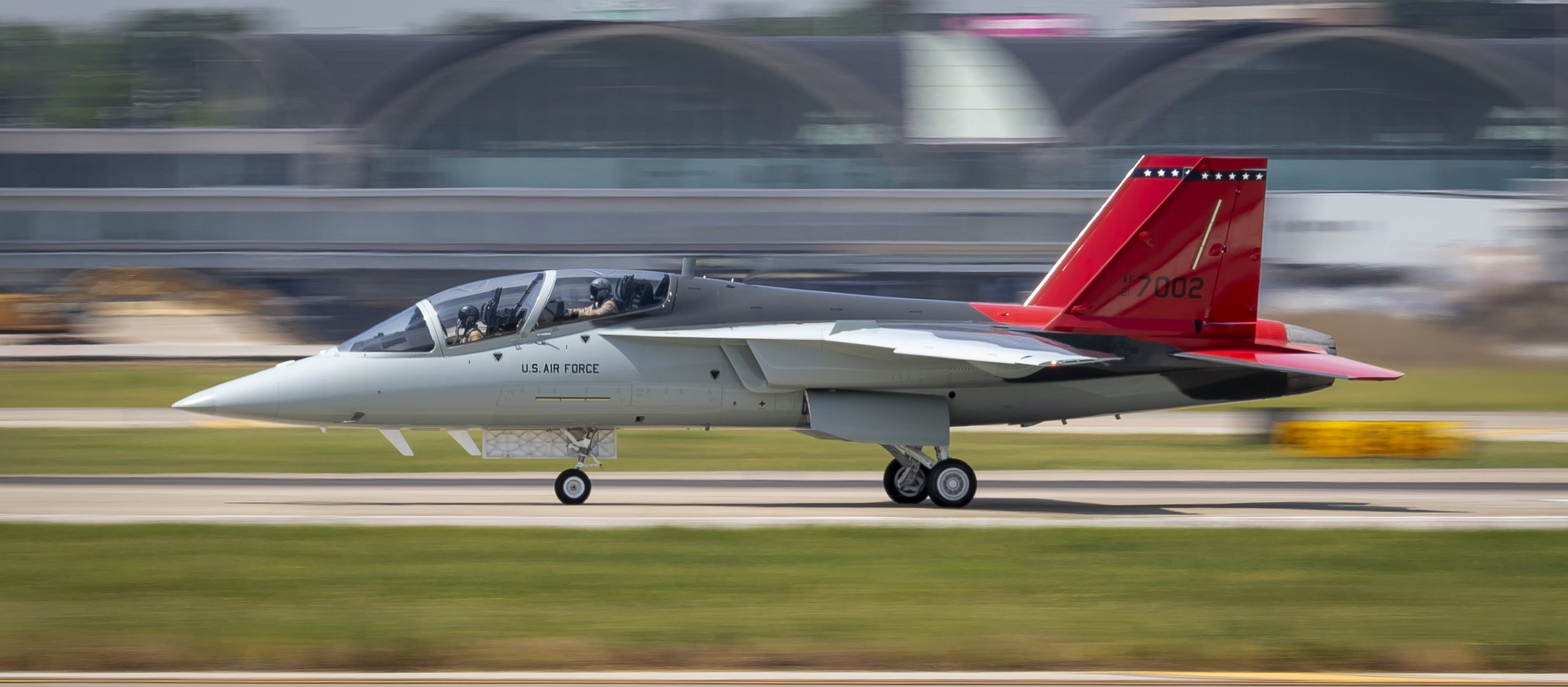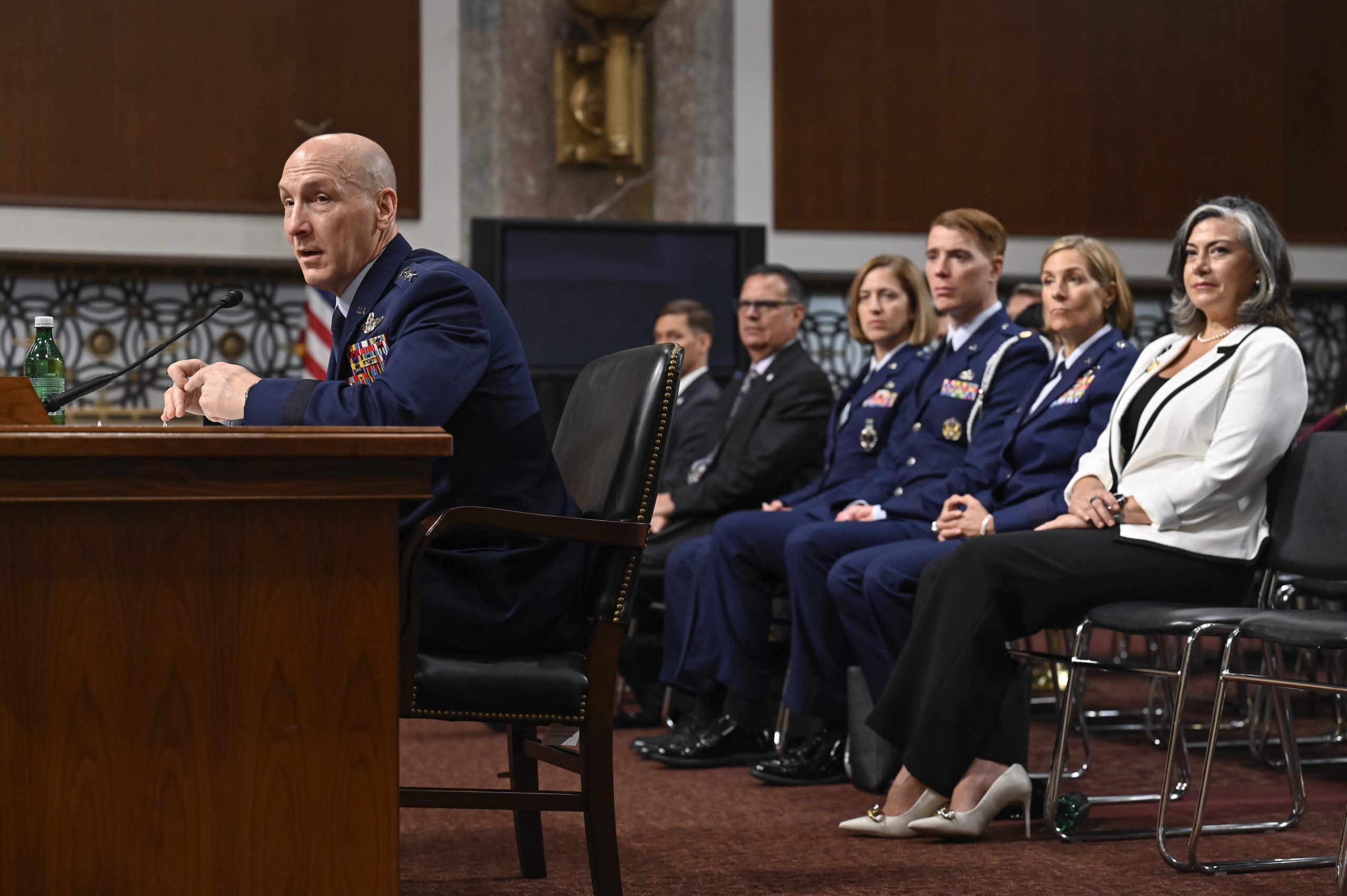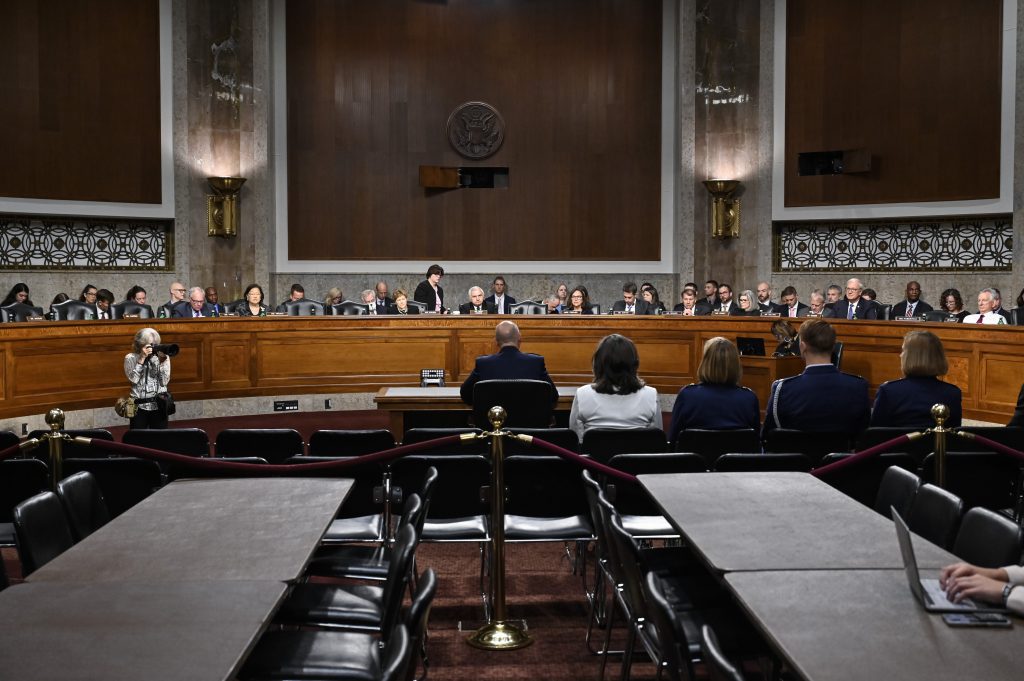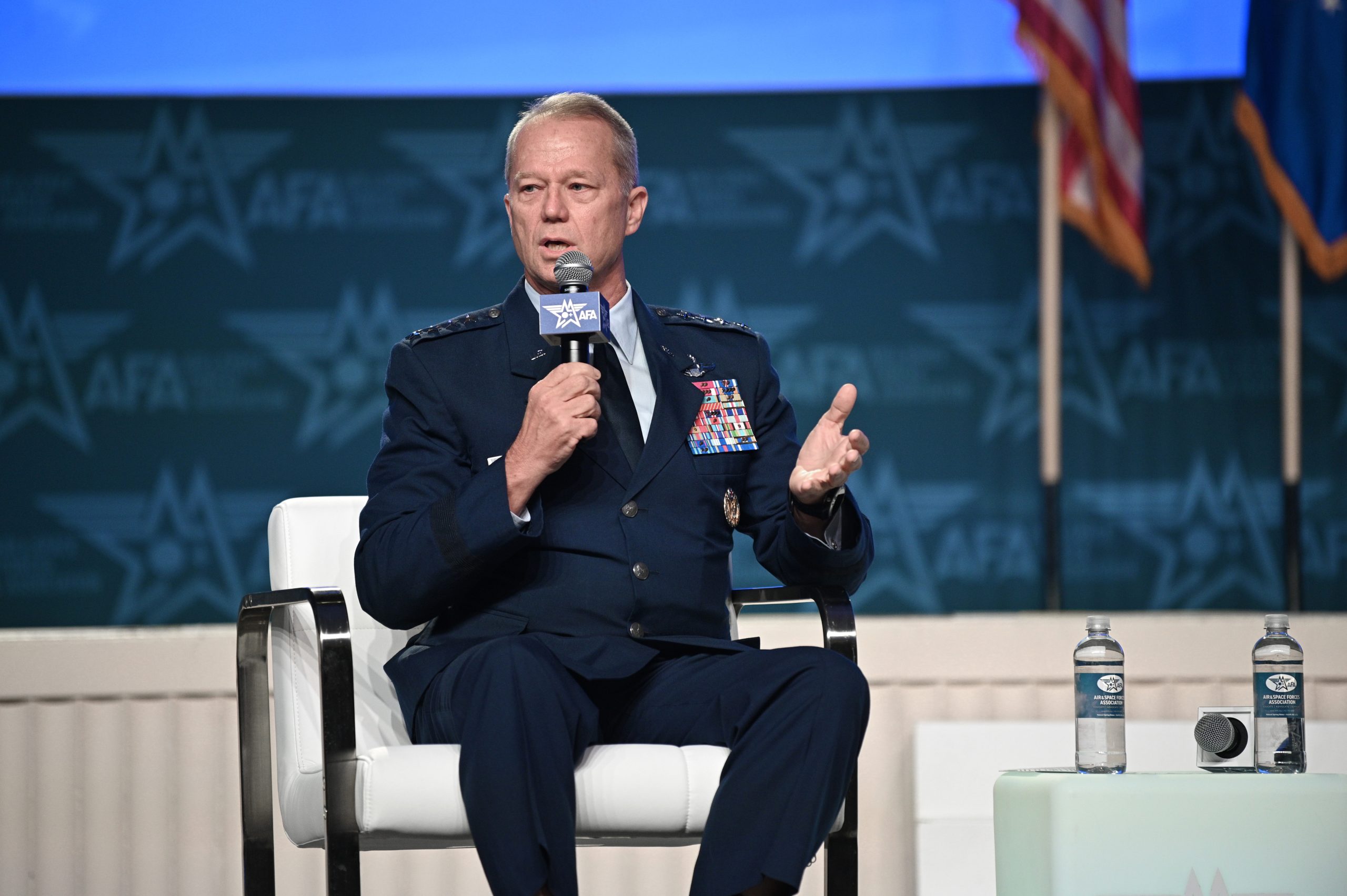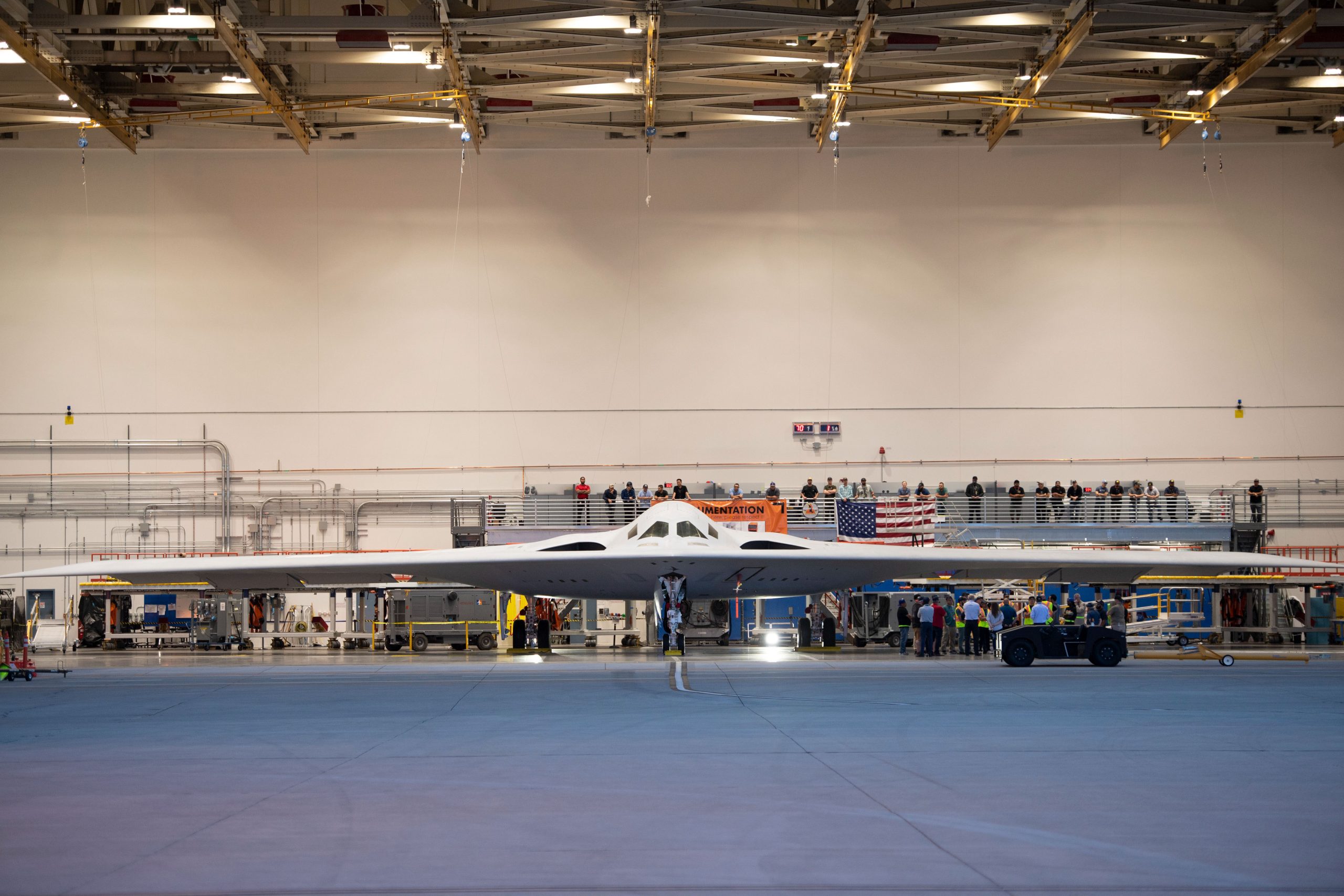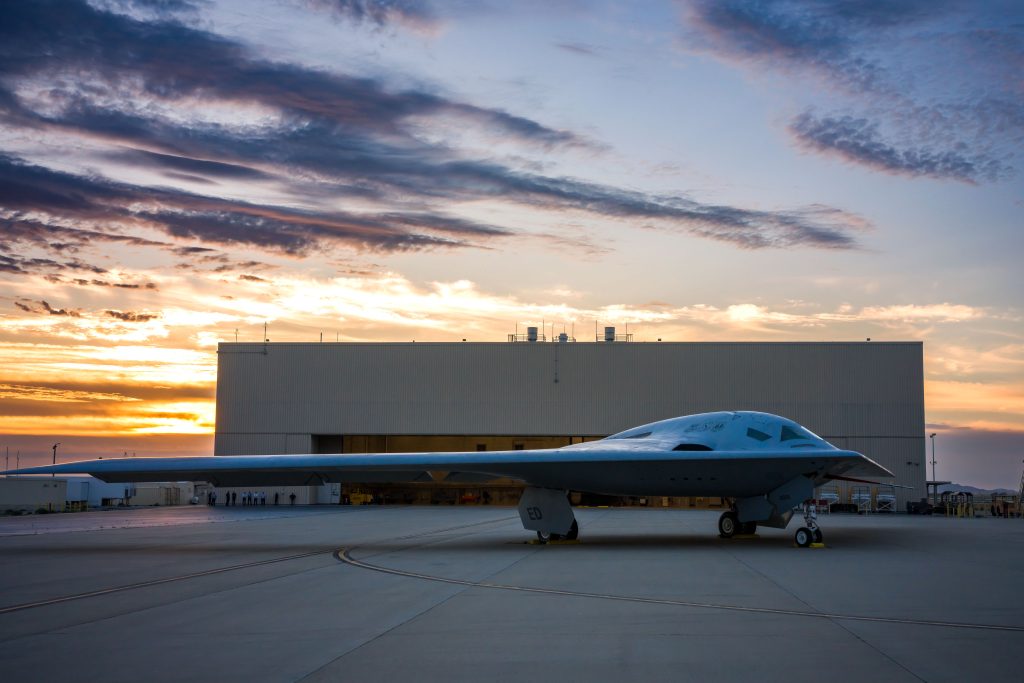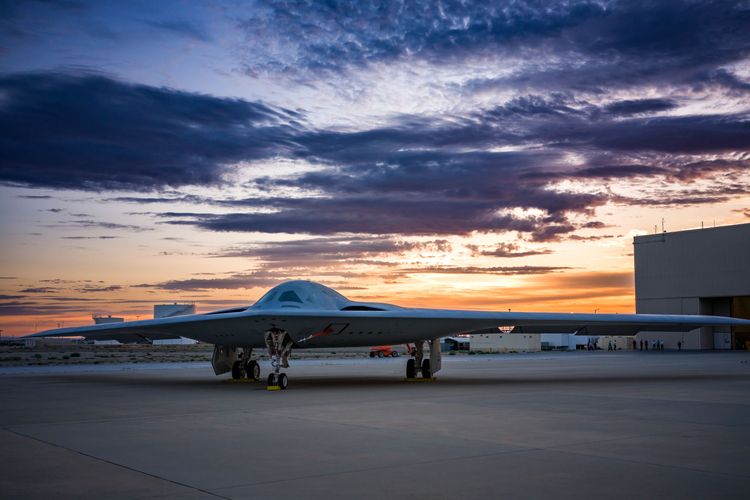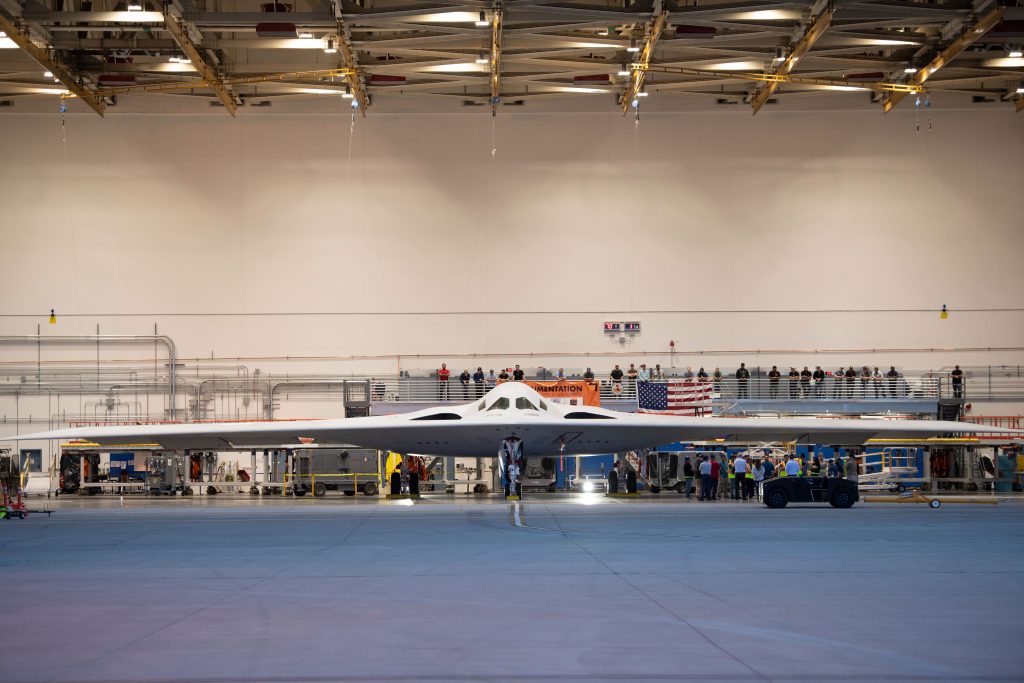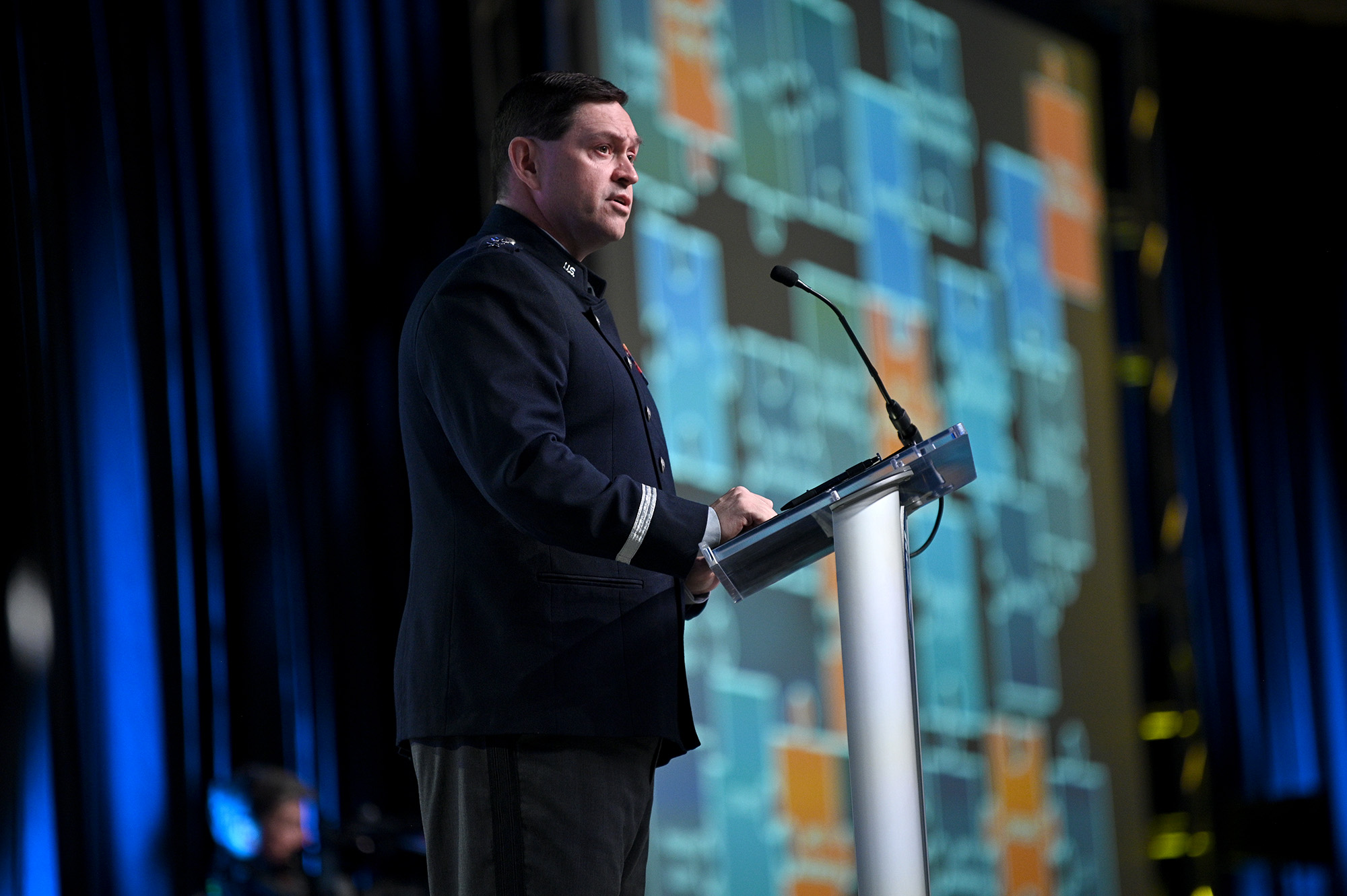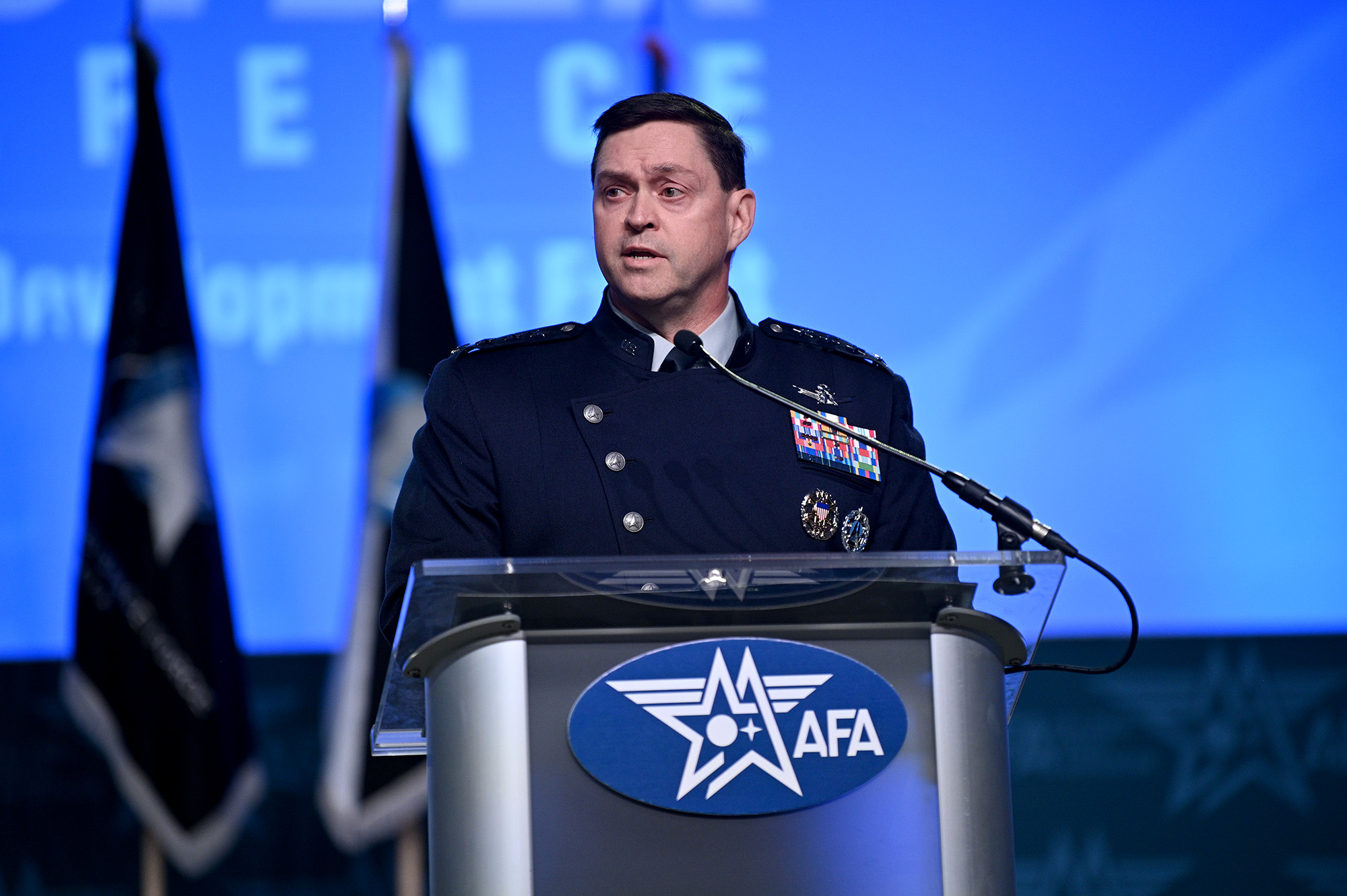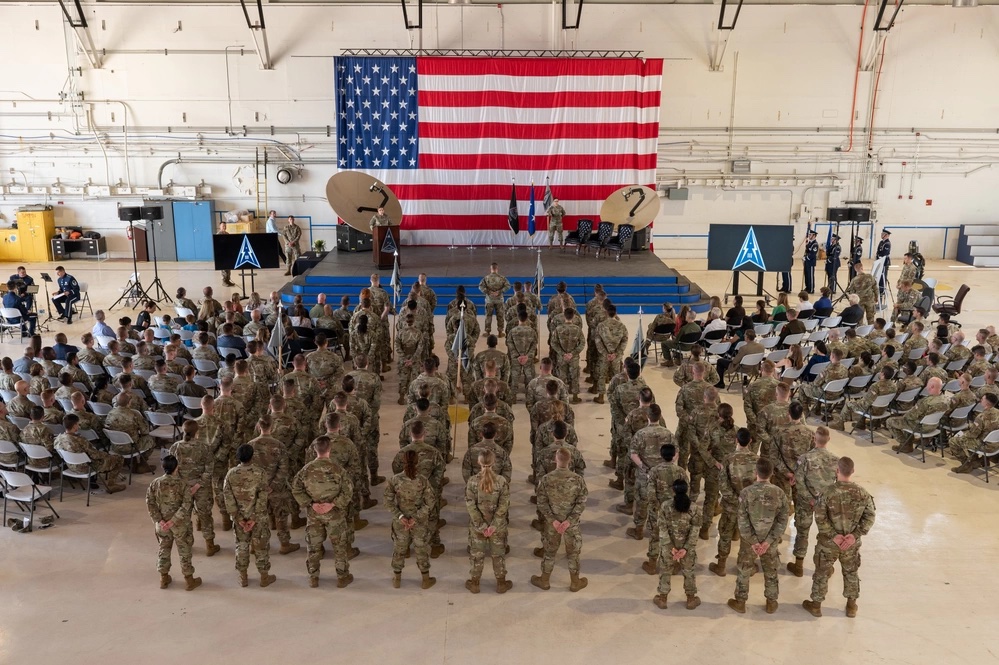Boeing submitted paperwork to deliver the first T-7A Red Hawk trainer jet to the Air Force on Sept. 12, marking the latest step towards the service’s goal to achieve initial operational capability in 2027. The Air Force hopes to receive four more Red Hawks by the end of the year, Col. Kirt Cassell told reporters at AFA’s Air, Space & Cyber Conference.
“It’s exciting, it’s like being handed the keys to a car,” said Cassell, chief of the Air Force’s T-7A Red Hawk division. “Of course I have to give the keys to Air Force test pilots [working] with Boeing test pilots.”
Indeed, if and when the Air Force accepts delivery of the first T-7A, Boeing would still be responsible for maintenance of the aircraft during the flight testing process. The jet, designated APT 2, is the same tail that Maj. Bryce Turner flew on June 28, the first official test flight conducted by an Air Force pilot.
Air Force test pilots will start flying the jet at the Boeing facilities in St. Louis, Mo., within the month. If all goes well, two more aircraft should join APT 2 in October. APT 1 and 2 will both be used to test flight sciences and may be sent to Edwards Air Force Base, Calif., in October, while APT 3 will undergo weather testing at the McKinley Climatic Laboratory at Eglin Air Force Base, Fla., before being used as a mission systems testing platform. APT 4 and 5 are due to join later this year, said Cassell and Evelyn Moore, vice president and program manager for Boeing’s T-7 programs.
At a previous conference in July, Cassell told reporters that the first two Red Hawks were ready to transfer to Edwards Air Force Base, Calif. in the “September-ish” timeframe, but the process took longer than expected due to paperwork challenges, he and Moore said.
“We had a lot to learn … there were a lot of long nights from both sides trying to get to where we are today,” the colonel said Sept. 12.
Delays are not new for the T-7 program, which was originally supposed to reach initial operational capacity in 2024. At first, the jet was hailed as proof of the promise of new digital engineering and design processes, but the Red Hawk has subsequently had trouble with flight stability, flight control software, and ejection seat problems. In May, Air Force Secretary Frank Kendall indicated digital engineering had been “over-hyped” to cut development time and cost, adding that nothing can replace real-world testing.
If the Red Hawk can get through the next few years of testing, it should provide a helpful boost for the Air Force’s rapidly aging fleet of T-38 Talon trainers, which are becoming increasingly difficult to keep airworthy. The Red Hawk is designed for ease of maintenance, information management, and modular systems architecture which is meant to help student pilots better prepare for modern air combat.
The Air Force plans to buy 351 T-7s, marking 350 left to go if APT 2 is accepted.
“It is a pivotal moment to deliver the first aircraft to the government,” Moore said.
